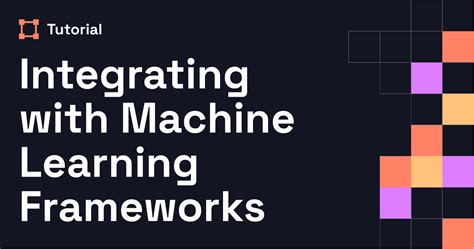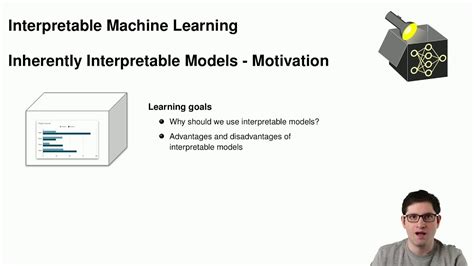In recent years, the integration of machine learning in education has revolutionized how educators approach teaching, learning, and assessment. One of the most powerful tools at the forefront of this transformation is XGBoost, an advanced gradient boosting technique known for its efficiency and performance. Combined with the versatility of Scikit-Learn, a popular Python library, educators can harness the power of these tools to build predictive models that enhance educational outcomes. This guide aims to provide educators with a comprehensive overview of mastering XGBoost using Scikit-Learn, from installation and setup to building, training, and evaluating models, along with practical applications and best practices in an educational context.
Investigate this topic thoroughly with electrapk.com
1. Introduction to XGBoost and Scikit-Learn
Extreme Gradient Boosting, more commonly known as XGBoost, is a highly effective and adaptable machine learning algorithm that has gained widespread recognition due to its accuracy, speed, and efficiency in handling extensive datasets. Created by Tianqi Chen and the Distributed Machine Learning Community, XGBoost finds broad application in regression, classification, and ranking tasks. Its remarkable performance in numerous data science competitions has solidified its position as a preferred tool for predictive modeling.
Scikit-Learn is a popular Python library renowned for its user-friendly and effective tools for data mining and analysis. Built upon a foundation of NumPy, SciPy, and matplotlib, it holds a prominent position within the data science community for developing machine learning models. Integrating XGBoost with Scikit-Learn allows educators to harness the combined strengths of both libraries, resulting in the creation of robust, high-performance models with ease. This integration provides educators with seamless access to XGBoost’s advanced features through the familiar Scikit-Learn API, making it an excellent choice for both educational endeavors and real-world applications.

2. Installing and Setting Up XGBoost with Scikit-Learn
Before you can begin using XGBoost and Scikit-Learn, you must install the necessary packages. Both libraries can be installed using `pip`, Python’s package manager. To do so, open your command line interface and execute the following commands:
bash
Copy code
pip install xgboost
pip install scikit-learn
These commands will fetch and install the most up-to-date versions of XGBoost and Scikit-Learn, guaranteeing compatibility and access to the newest capabilities. After installation, you can confirm the process by importing them into your Python environment. Open a Python script or Jupyter Notebook and execute the following:
python
Copy code
import xgboost as xgb
from sklearn.model_selection import train_test_split
from sklearn.metrics import accuracy_score
Congratulations! Your installation is complete if no errors were encountered. Now, you’re all set to explore the capabilities of these powerful tools. To ensure a seamless experience, you’ll need to configure your development environment, such as Jupyter Notebook, VSCode, or PyCharm, for Python development. This includes setting up Python paths, creating virtual environments, and installing the necessary libraries. A well-structured environment fosters efficient workflow and simplifies troubleshooting, especially when working with diverse datasets and model configurations in educational applications.

3. Preparing Data for XGBoost in Educational Contexts
Data preparation is essential for successful XGBoost applications in education. The quality and format of the data significantly influence the model’s performance. Educational datasets commonly include student performance, attendance, or engagement metrics. The first step is to gather and clean the data, eliminating missing values and outliers that could distort results. This might involve imputing missing data or removing irrelevant features.
After cleaning the data, it should be divided into features (input variables) and labels (output variables). The model will learn to predict these labels based on the features. To achieve this, utilize Scikit-Learn’s `train_test_split` function to partition the data into training and testing sets. A common split ratio is 80:20, allocating 80% for training and 20% for testing. This approach ensures the model is trained on a substantial portion of the data while being evaluated on an independent subset to assess its performance. Properly prepared and split data will result in more accurate and generalizable models, making the findings more applicable and valuable within educational contexts.

4. Building and Training XGBoost Models
Building and training XGBoost models is a straightforward process using the XGBoost API, integrated with Scikit-Learn. First, import either the `XGBClassifier` or `XGBRegressor` from the XGBoost library, depending on whether your task involves classification or regression. For instance, in educational settings, you could use classification to predict student pass/fail outcomes or regression to predict continuous scores.
Here’s a basic example to get started:
python
Copy code
from xgboost import XGBClassifier
model = XGBClassifier()
model.fit(X_train, y_train)
This code utilizes `X_train` for the training data features and `y_train` for the corresponding labels or target outcomes. The `fit` method trains the model using this data. XGBoost provides a range of parameters, including `learning_rate`, `n_estimators`, and `max_depth`, which can be adjusted to enhance the model’s performance. These parameters govern the learning process, enabling better management of model complexity and the mitigation of overfitting.
After training, you can use the model to make predictions:
python
Copy code
predictions = model.predict(X_test)
This step produces predictions for the test data, allowing for evaluation using various performance metrics. These metrics provide educators with insights into the model’s effectiveness in making accurate predictions.
5. Evaluating Model Performance with Scikit-Learn Metrics
Evaluating XGBoost Model Performance in Educational Settings
Understanding the effectiveness and reliability of your XGBoost model in predicting educational outcomes is essential. Scikit-Learn offers a robust suite of metrics for model evaluation, particularly useful for classification and regression tasks. After generating predictions on your test dataset, utilize metrics such as accuracy, precision, recall, and F1-score for classification problems. These metrics illuminate the model’s ability to accurately predict categories, such as a student’s passing or failing status.
For example, you can calculate accuracy using Scikit-Learn’s `accuracy_score` function.
python
Copy code
from sklearn.metrics import accuracy_score
accuracy = accuracy_score(y_test, predictions)
When evaluating regression models, metrics like mean squared error (MSE), mean absolute error (MAE), and R-squared are employed to assess the accuracy of predictions. These metrics measure how closely the model’s predicted values align with the actual outcomes. For instance, these metrics can be used to evaluate the accuracy of a model predicting test scores.
python
Copy code
from sklearn.metrics import mean_squared_error
mse = mean_squared_error(y_test, predictions)
These metrics enable educators to quantify the model’s effectiveness, providing a data-driven foundation for refining teaching practices and enhancing student achievements.
6. Tuning Hyperparameters for Optimal Performance
Optimizing XGBoost models requires careful tuning of hyperparameters. These settings directly impact the training process and can significantly affect the model’s accuracy and resilience. Key hyperparameters include:
* learning_rate: Controls the step size taken during each iteration of the gradient descent algorithm.
* n_estimators: Defines the number of decision trees in the model.
* max_depth: Limits the depth of individual decision trees, controlling their complexity.
* min_child_weight: Sets the minimum weight required for a split in a tree, preventing overfitting.
* gamma: Determines the minimum loss reduction required for a split, mitigating overfitting.
* subsample: Controls the fraction of training data used in each iteration, improving robustness.
By adjusting these parameters, you can fine-tune the learning process, leading to a more accurate and robust XGBoost model.
To initiate the tuning process, utilize Scikit-Learn’s GridSearchCV or RandomizedSearchCV, which offer automated hyperparameter optimization. These techniques systematically explore a defined range of parameter values, aiming to identify the configuration that optimizes the model’s performance.
Here’s an example using GridSearchCV:
python
Copy code
from sklearn.model_selection import GridSearchCV
param_grid = {
‘learning_rate’: [0.01, 0.1, 0.2],
‘max_depth’: [3, 5, 7],
‘n_estimators’: [50, 100, 150]
}
“`python
grid_search = GridSearchCV(
estimator=XGBClassifier(),
param_grid=param_grid,
cv=3
)
“`
grid_search.fit(X_train, y_train)
Through the evaluation of various combinations and the application of cross-validation techniques, educators can optimize their models to attain maximum accuracy and dependability. This ensures that their predictions are well-informed and capable of effectively supporting positive educational outcomes.
7. Real-World Applications in Education
XGBoost, in conjunction with Scikit-Learn, has notable real-world applications in the field of education. A key example is predicting student performance. Through the analysis of historical data, including grades, attendance, and participation records, educators can create models to anticipate future academic success. This capability allows for the identification of students who may require extra support or intervention, enabling more personalized and timely assistance.
XGBoost can also be utilized in course evaluation. By analyzing student feedback, it identifies patterns and trends, enabling educators to gauge the effectiveness of their teaching methods and course materials. This analysis facilitates improvements in curriculum design and instructional strategies, ultimately enhancing the overall learning experience.
Furthermore, XGBoost can be employed to forecast student dropout rates. By analyzing factors such as engagement levels and academic progress, educators are able to pinpoint students at risk of dropping out and implement strategies to enhance retention and success rates.
In educational research, XGBoost models offer a powerful tool for analyzing complex relationships within educational data. By uncovering hidden insights, these models can pave the way for innovative teaching strategies and policy changes. This data-driven approach empowers educational practices, leading to more effective decision-making and ultimately, improved learning outcomes.
8. Best Practices and Tips for Educators
In educational settings, adhering to best practices when utilizing XGBoost with Scikit-Learn is crucial for achieving optimal model performance and trustworthy outcomes. Begin by meticulously preprocessing and cleaning the data to remove noise and inconsistencies, which can substantially affect model accuracy. To assess the model’s ability to generalize and prevent overfitting, consistently divide the data into training and testing sets.
Employ cross-validation techniques to optimize hyperparameters and evaluate model performance across various data subsets. This approach aids in identifying the most effective parameters and enhances model robustness. Furthermore, ensure ongoing monitoring and updates to your models as new data emerges, maintaining their relevance and accuracy throughout time.
To maximize the impact of machine learning in education, educators should prioritize interpretability. By analyzing feature importance scores, they can identify the key factors driving predictions, gaining valuable insights into educational processes and outcomes. Furthermore, collaborating with data scientists or statisticians ensures that advanced techniques are applied in alignment with educational goals, optimizing the use of machine learning to enhance teaching and learning experiences.
Mastering XGBoost with Scikit-Learn offers educators powerful tools for enhancing educational outcomes through data-driven insights. By following best practices in data preparation, model building, and hyperparamete
electrapk.com
